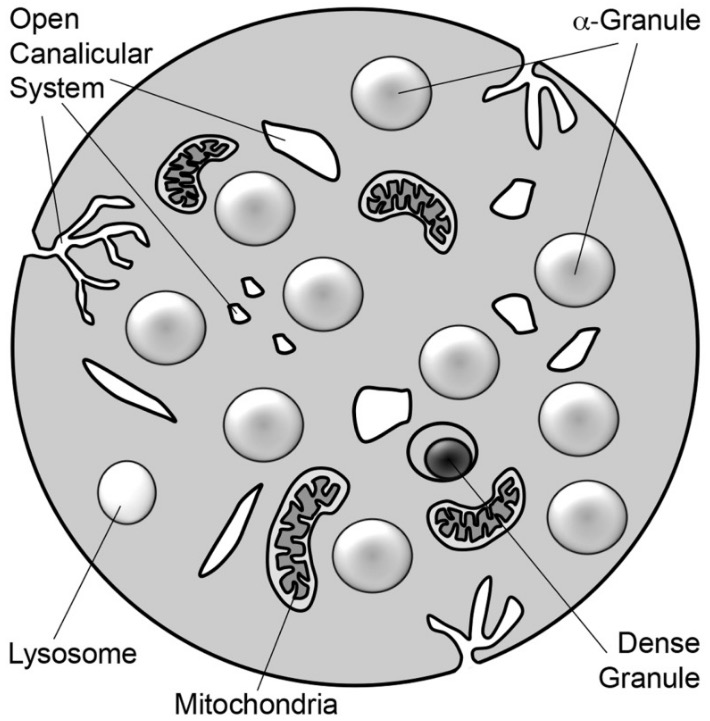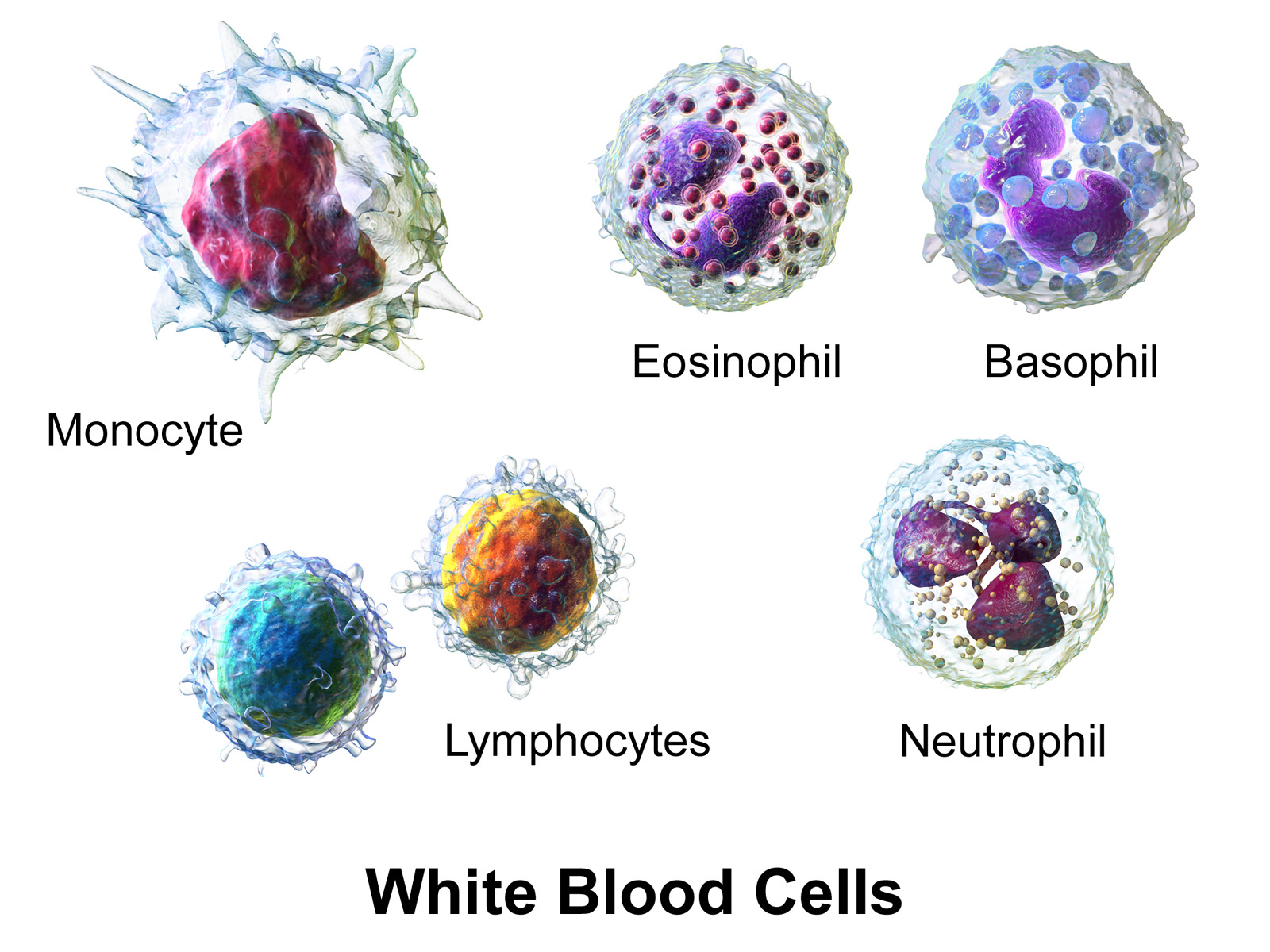Playlist
Show Playlist
Hide Playlist
Thrombopoiesis and Granulopoiesis
-
Slides 14 Types of Tissues Meyer.pdf
-
Reference List Histology.pdf
-
Download Lecture Overview
00:01 Let us look at thrombopoiesis or the formation of the platelet. Here is a huge cell. 00:08 This is the megakaryocyte. It is multilobed. It often has many many many different components to the nucleus. It is a huge cell up to about 70 microns or even bigger. And what happens is that the cell membrane around that megakaryocyte invaginates a number of times into the internal components of the cell and those invaginations come together and join up and therefore part of the cytoplasm is cleaved or broken off and released into the bone marrow and then into the blood system, the plasma and the red blood cells within the vascular network. 00:56 And that is a platelet or a thrombocyte. And as I explained in the lecture on blood, these thrombocytes have very very important functions, particularly in helping reduce the leakage of fluid during damaged parts of the wall of the blood vessel. 01:16 Well now let us look granulopoiesis, the formation of the granulocytes. Here you see another image of bone marrow. And what we want to concentrate on now, is the granulocyte, monocyte, progenitor cell lineage. The lineage is going to give rise to the granulocytes and also the monocytes. 01:40 But as I have mentioned earlier, I am only going to look at the formation of the neutrophil. 01:46 Well the first cell that starts off in this lineage is the myeloblast. It is a large cell again. 01:54 It is about 20 microns in diameter and it has got a large euchromatic nucleus. 02:03 Now when a blast cell forms, when cells often revert to being a blast type cell, then they are very busy cells. They are manufacturing components and we will see that as we look at cells particularly with the immune system and other tissues later on. Because they are very busy cells, therefore they have a very euchromatic nucleus rather than a more heterochromatic nucleus, which reflects usually that they are not so active, they are resting. Well now let us look at the next cell type in the pathway. Let us see where these myeloblasts then moves into or differentiates into, what sort of cell is it and what is it look like? Well it differentiates into the promyelocyte and this promyelocyte contains or starts to generate the factory that is going to make azurophilic or primary granules. I say the word primary here because these granules appear in all the granulocytes, the neutrophils, the eosinophils and the basophils. 03:21 But you will recall if you have knowledge of these three different granulocytes that granules are quite different in their content as they differentiate into their respective cell types. So initially this part of the lineage starts to accumulate these granules and therefore they stain with the azu dyes, but they are yet to go through the differentiation into acquiring granules and the contents of those granules that are specific for the cell type. 03:58 So this is a general cell, which we have to really determine which direction it goes into. 04:05 Does it become a neutrophil or a basophil or an eosinophil? The next stage of this cell
About the Lecture
The lecture Thrombopoiesis and Granulopoiesis by Geoffrey Meyer, PhD is from the course Bone Marrow.
Included Quiz Questions
What is the approximate size of a megakaryocyte in microns?
- 50 to 100
- 10-20
- 6-8
- 200-300
- Less than 1
The cytoplasmic fragments of megakaryocytes in the bone marrow enter the blood circulation as which of the following?
- Platelets
- Reticulocytes
- Monocytes
- Immunoglobulins
- Clotting factors
What cell does the myeloblast differentiate into?
- Promyelocyte
- Myelocyte
- Metamyelocyte
- Band cell
- Segmented neutrophil
Customer reviews
5,0 of 5 stars
| 5 Stars |
|
5 |
| 4 Stars |
|
0 |
| 3 Stars |
|
0 |
| 2 Stars |
|
0 |
| 1 Star |
|
0 |







